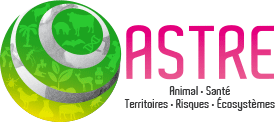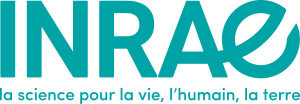L’UMR ASTRE regroupe un collectif de chercheurs travaillant sur des thématiques ou modèles d’entomologie médicale et vétérinaire et notamment sur des thématiques liées aux tiques. Ils ont pour objectif de caractériser leur bio-écologie, de comprendre l’épidémiologie des maladies qu’elles transmettent et de développer des outils de surveillance et de lutte.
Les principales activités de recherche portent sur :
- La caractérisation des différentes espèces de tiques (taxonomie) et de leur rôle dans la transmission
- L’étude de la distribution et de la bio-écologie des tiques (étude de traits d’histoire de vie)
- L’éco-épidémiologie des maladies à tiques et la prédiction du risque à travers une approche intégrative et la modélisation
- L’étude du microbiome des tiques et de ses interactions avec la présence des agents pathogènes
- Le développement d’outils de surveillance adaptés
- Le développement d’outils et de stratégies de contrôle intégrées, innovantes et respectueuses de l’environnement
L’UMR ASTRE dispose d’un insectarium de niveau 2 et fait partie du réseau montpelliérain de plateformes
pour la recherche sur les arthropodes d’intérêt médical, vétérinaire et agricole (VECTOPOLE SUD http://www.vectopole-sud.fr). L’insectarium de Baillarguet est également l’une des plateformes constituantes de l’infrastructure nationale distribuée EMERG’IN (https://www.emergin.fr/), dédiée à la lutte contre les maladies infectieuses animales émergentes ou zoonotiques par l’exploration in vivo. Dans ce cadre, il peut être ouvert à des utilisateurs extérieurs à l’unité. Il distribue également ses ressources (tiques dures et tiques molles, semaines d’accès) via le projet européen ISIDORe (https://isidore-project.eu/).
The ASTRE research unit brings together a group of researchers working on medical and veterinary entomology themes or models, particularly those related to ticks. Their objective is to characterize their bio-ecology, understand the epidemiology of the diseases they transmit and develop surveillance and control tools.
The main research activities focus on:
- Characterization of the different tick species (taxonomy) and their role in transmission
- The study of tick distribution and bio-ecology (study of life history traits)
- Eco-epidemiology of tick-borne diseases and risk prediction through an integrative approach and modelling
- The study of the tick microbiome and its interactions with tick-borne pathogens
- The development of appropriate monitoring tools
- The development of integrated, innovative and environmentally friendly tools and control strategies
The ASTRE research unit has a level 2 insectarium and is part of the Montpellier-based network of platforms for the research on arthropods of medical, veterinary and agricultural interest (VECTOPOLE SUD http://www.vectopole-sud.fr). In this context, it may be open to users outside the unit. It also distributes its resources (hard and soft ticks, facility access) via the European INFRAVEC2 project (https://infravec2.eu).
- Amblyomma spp. / Ehrlichia ruminantium (bactérie responsable de la cowdriose des ruminants)
- Ornithodoros spp. / Asfivirus de la Peste Porcine Africaine (PPA)
- Hyalomma marginatum / Nairovirus de la Fièvre hémorragique de Crimée-Congo (FHCC)
- Rhipicephalus bursa / Poxvirus de la Dermatose Nodulaire Contagieuse (DNC)
- Bah, T. M., V. Grosbois, F. Stachurski, F. Munoz, M. Duhayon, I. Rakotoarivony, A. Appelgren, C. Calloix, L. Noguera, T. Mouillaud, C. Andary, R. Lancelot, K. Huber, C. Garros, A. Leblond, and L. Vial. 2022. The Crimean-Congo haemorrhagic fever tick vector Hyalomma marginatum in south of France: Modelling its distribution and determination of factors influencing its establishment in a newly invaded area. Transboundary and Emerging Diseases:1-15. https://doi.org/10.1111/tbed.14578
- Bernard, C., P. Holzmuller, M. T. Bah, M. Bastien, B. Combes, F. Jori, V. Grosbois, and L. Vial. 2022. Systematic review on Crimean – Congo hemorrhagic fever enzootic cycle and factors favoring virus transmission: Special focus on France, an apparently free-disease area in Europe. Frontiers in Veterinary Science 9:17 p. https://doi.org/10.3389/fvets.2022.932304
- Buysse, M., M. Duhayon, F. Cantet, M. Bonazzi, and O. Duron. 2021. Vector competence of the African argasid tick Ornithodoros moubata for the Q fever agent Coxiella burnetii. PLoS Neglected Tropical Diseases 15:14 p. https://doi.org/10.1371/journal.pntd.0009008
- Duron, O., O. Morel, V. Noel, M. Buysse, F. Binetruy, R. Lancelot, E. Loire, C. Ménard, O. Bouchez, F. Vavre, and L. Vial. 2018. Tick-bacteria mutualism depends on B vitamin synthesis pathways. Current Biology 28:1896-1902.e1895. https://doi.org/10.1016/j.cub.2018.04.038
- Grech-Angelini, S., F. Stachurski, M. Vayssier-Taussat, E. Devillers, F. Casabianca, R. Lancelot, G. Uilenberg, and S. Moutailler. 2020. Tick-borne pathogens in ticks (Acari: Ixodidae) collected from various domestic and wild hosts in Corsica (France), a Mediterranean island environment. Transboundary and Emerging Diseases 67:745-757. https://doi.org/10.1111/tbed.13393
- Huber, K., S. Jacquet, R. Rivallan, H. Adakal, N. Vachiéry, A.-M. Risterucci, and C. Chevillon. 2019. Low effective population sizes in Amblyomma variegatum, the tropical bont tick. Ticks and Tick-borne Diseases 10:93-99. https://doi.org/10.1016/j.ttbdis.2018.08.019
- Pereira De Oliveira, R., E. Hutet, M. Duhayon, F. Paboeuf, M.-F. Le Potier, and L. Vial. 2020. No experimental evidence of co-feeding transmission of african swine fever virus between Ornithodoros soft ticks. Pathogens 9:6 p. https://doi.org/10.3390/pathogens9030168
- Pereira De Oliveira, R., E. Hutet, R. Lancelot, F. Paboeuf, M. Duhayon, F. Boinas, A. A. Pérez de León, S. Filatov, M.-F. Le Potier, and L. Vial. 2020. Differential vector competence of Ornithodoros soft ticks for African swine fever virus: What if it involves more than just crossing organic barriers in ticks? Parasites and Vectors 13:15 p. https://doi.org/10.1186/s13071-020-04497-1
- Pereira De Oliveira, R., E. Hutet, F. Paboeuf, M. Duhayon, F. Boinas, A. A. Pérez de León, S. Filatov, L. Vial, and M.-F. Le Potier. 2019. Comparative vector competence of the Afrotropical soft tick Ornithodoros moubata and Palearctic species, O. erraticus and O. verrucosus, for African swine fever virus strains circulating in Eurasia. PloS One 14:16 p. https://doi.org/10.1371/journal.pone.0225657
- Vial, L., E. Ducheyne, S. Filatov, A. Gerilovych, D. S. McVey, I. Sindryakova, S. Morgunov, A. A. Pérez de León, D. Kolbasov, and E. M. De Clercq. 2018. Spatial multi-criteria decision analysis for modelling suitable habitats of Ornithodoros soft ticks in the Western Palearctic region. Veterinary Parasitology 249:2-16. https://doi.org/10.1016/j.vetpar.2017.10.022
- Compétence vectorielle
- Distribution des espèces
- Traits d’histoire de vie
- Taxonomie
- Génétique des populations
- Microbiote


